A vertical garden is a modern way of exhibiting indoor plants which not only improves the aesthetic character of a room, but also the air quality. Hercs Flora is the only business in Latvia to offer a wide range of vertical garden systems: inbuilt and free-standing plant walls, moss walls and decorative artificial plant walls.
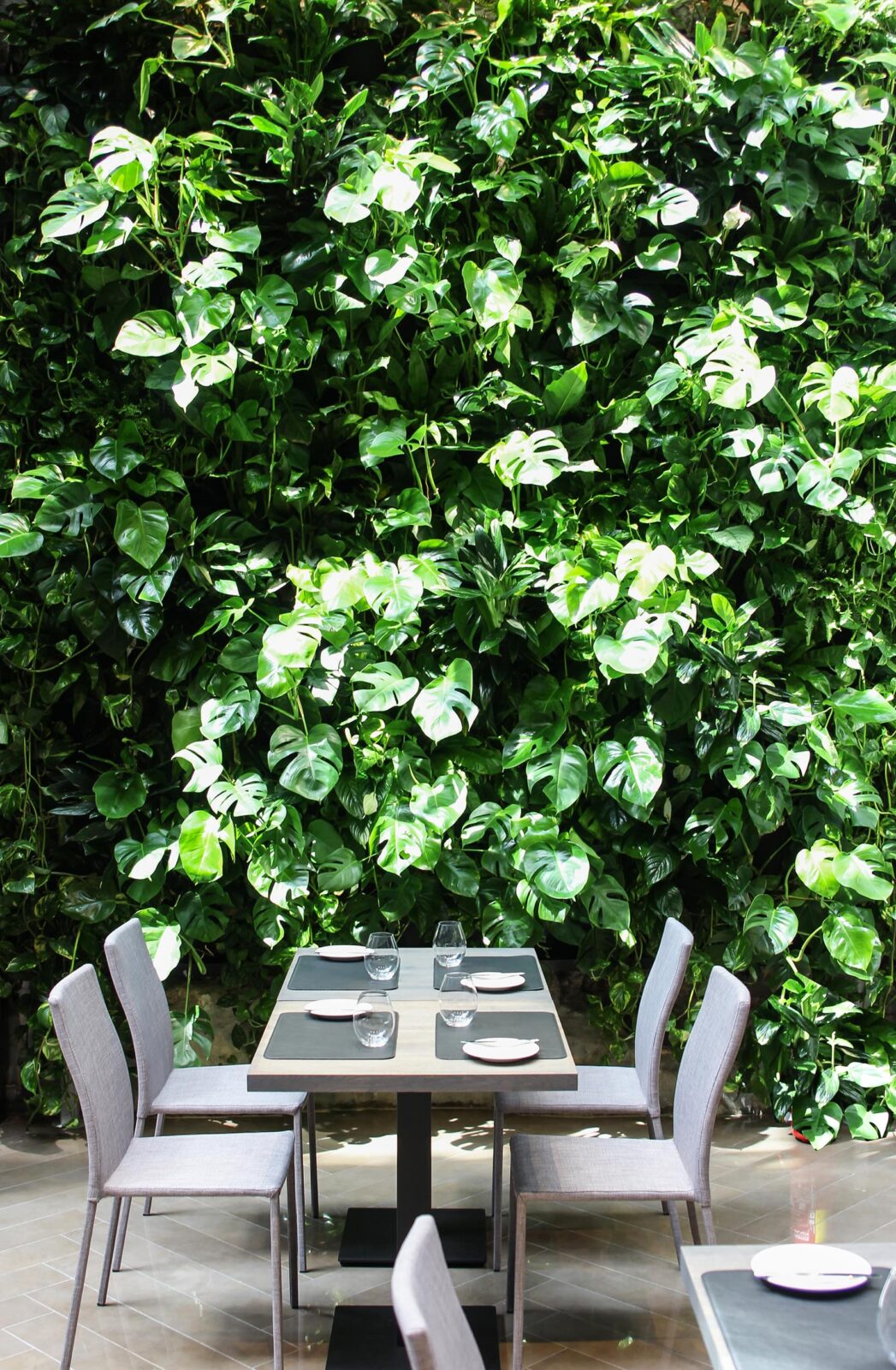
Green wall
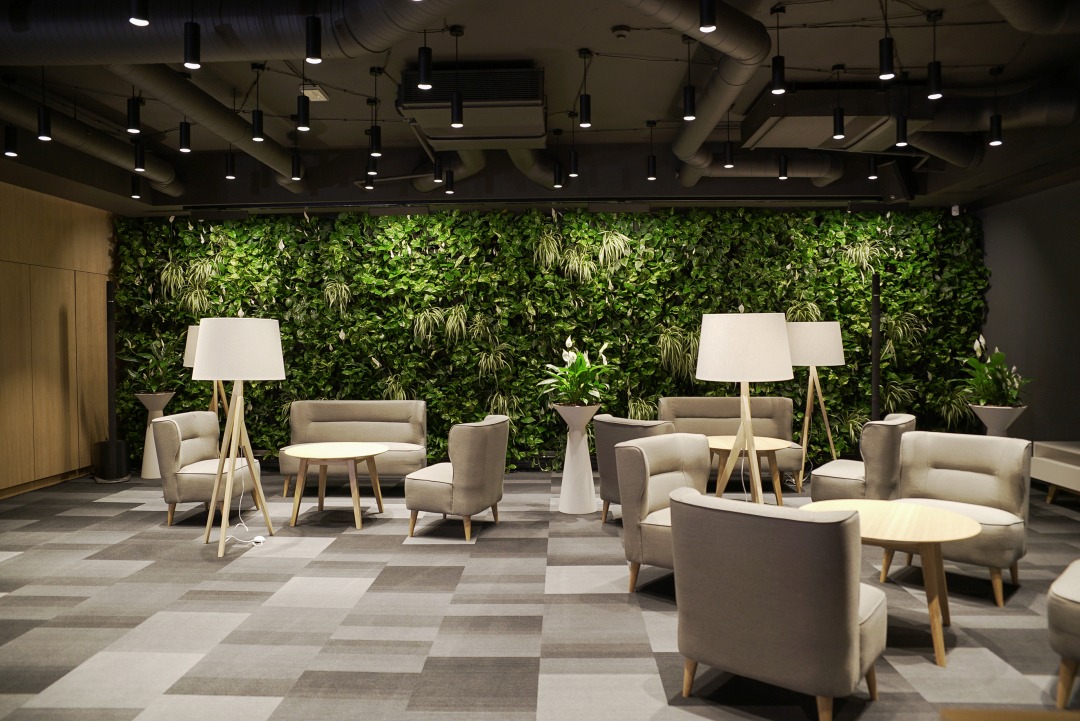
Built-In Green Wall
A built-in green wall is a unique design solution which also serves as an effective interior element which reflects company values like sustainability and environmentally-friendly operations. This kind of system is suitable for covering large surface areas in locations with a water source and drainage. With more than ten years’ experience, Hercs Flora is the leading green wall installer in Latvia.
Read more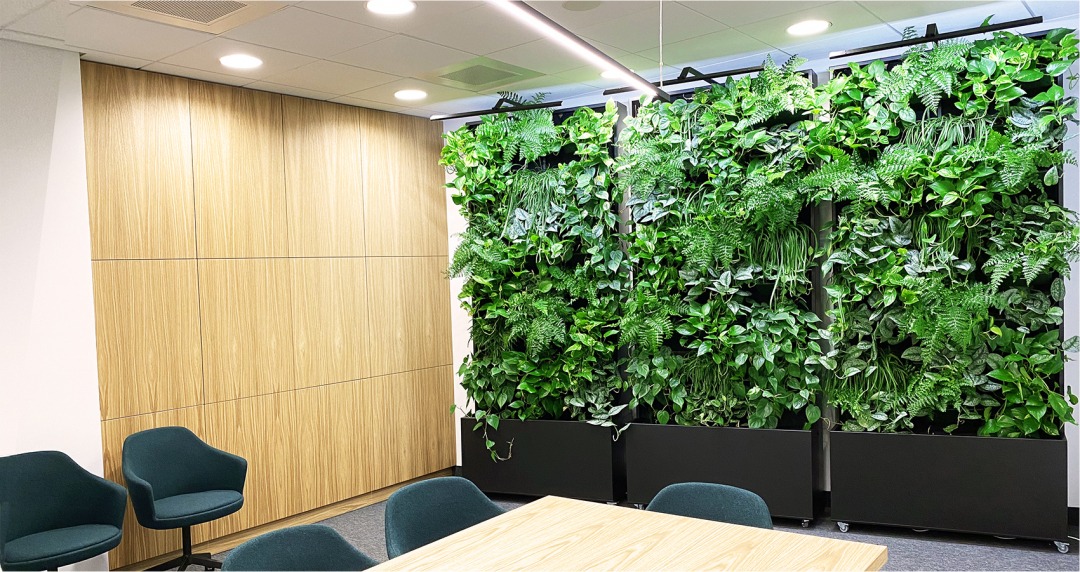
Free-Standing Green Wall
A free-standing wall is a moveable, self-circulating system which does not require a water source and which can be easily moved when and where you want. The structure has its own lighting, the client’s choice of plants and a watering system. It is completely mobile and is automatically programmed to provide the processes the plants need, with watering adapted to the conditions in the room.
Read more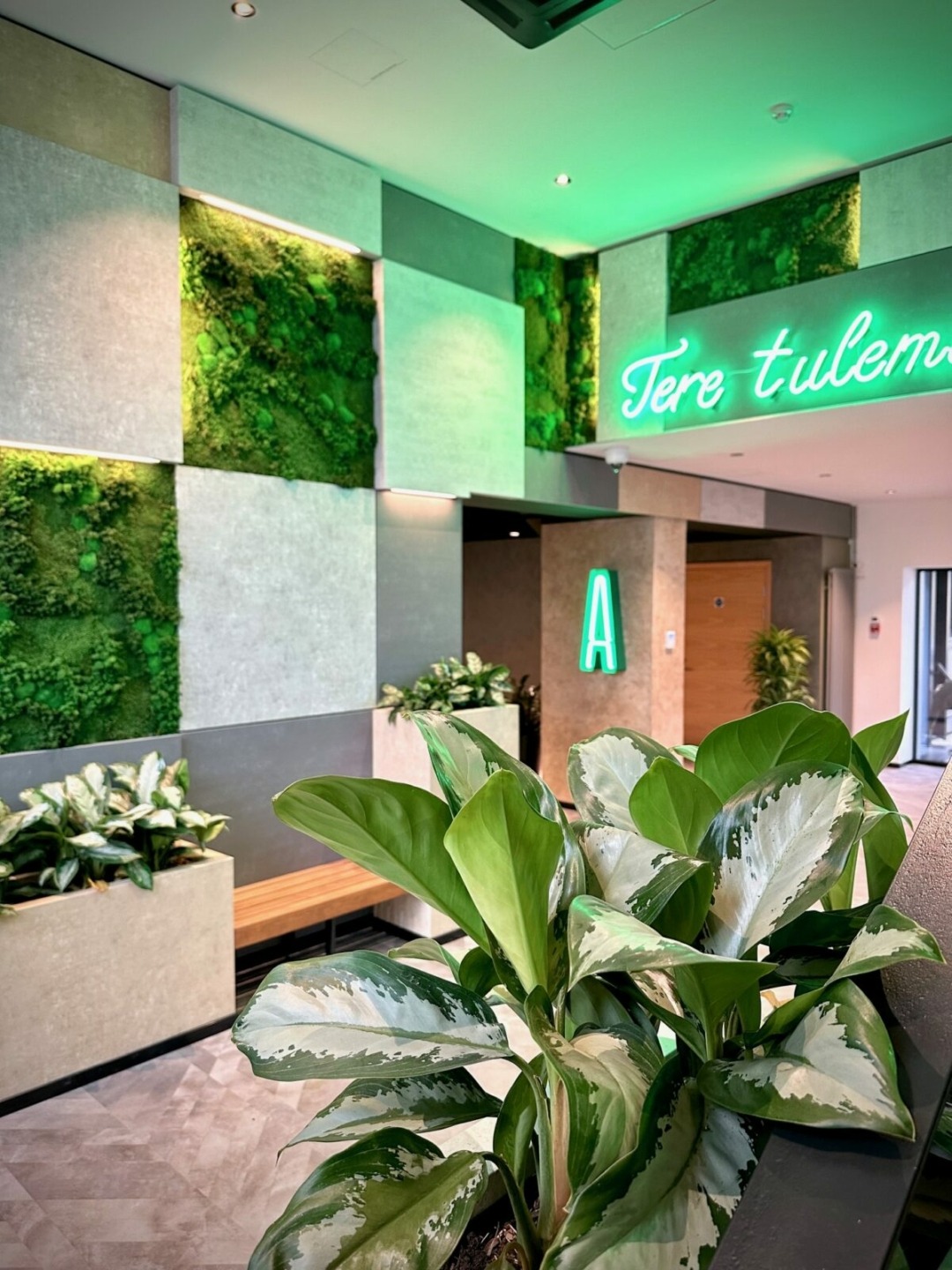
Moss Wall
A stabilised moss wall is an innovative way to integrate elements of nature into any room. It takes up very little space, needs almost no maintenance, and looks amazing in many different situations. This is a very good alternative to a green wall and is a high-quality design element on its own merit. The porous texture of moss makes it a successful sound dampener, and it absorbs harmful substances found in the air.
Read moreCooperation partners


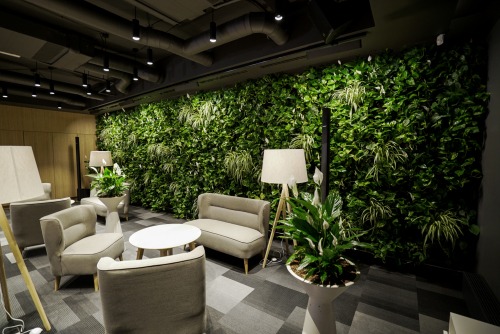

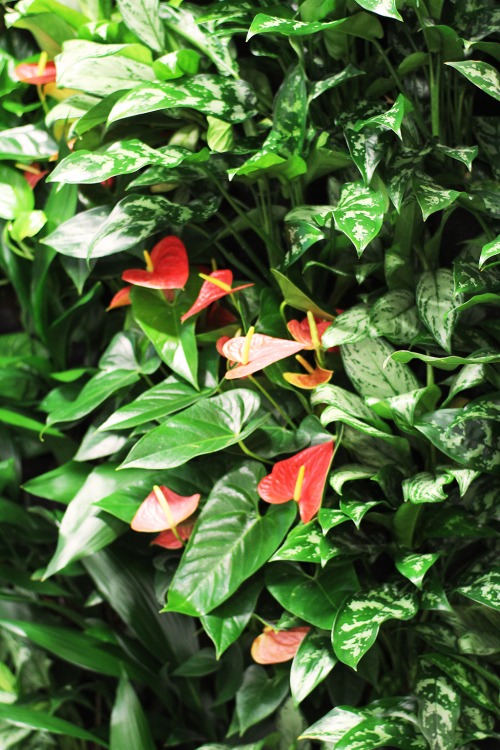
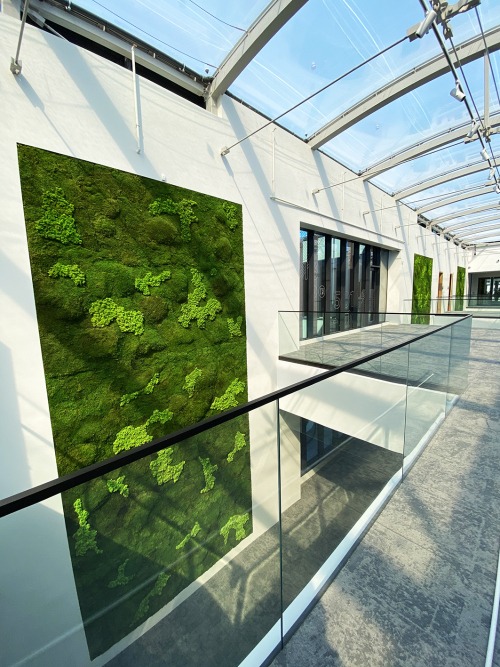
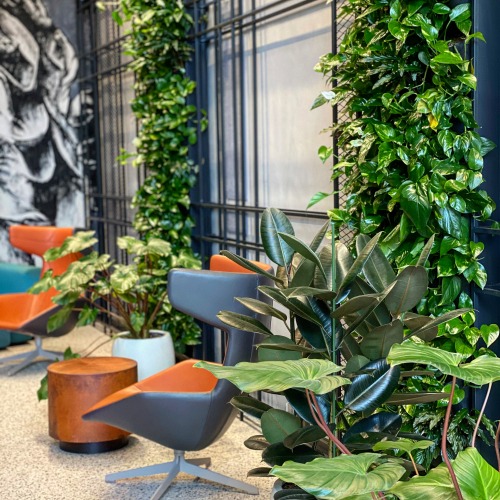
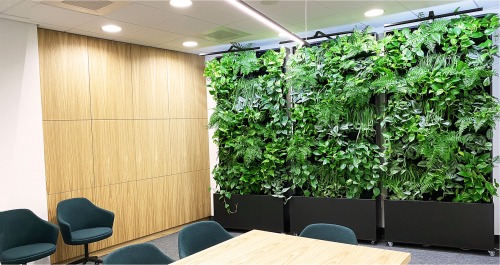
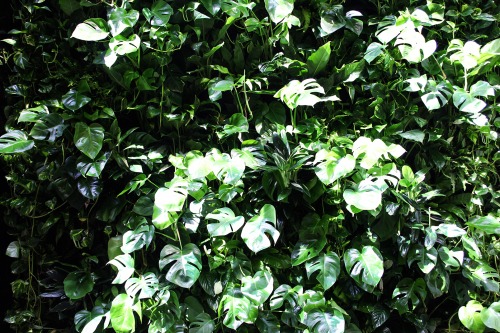
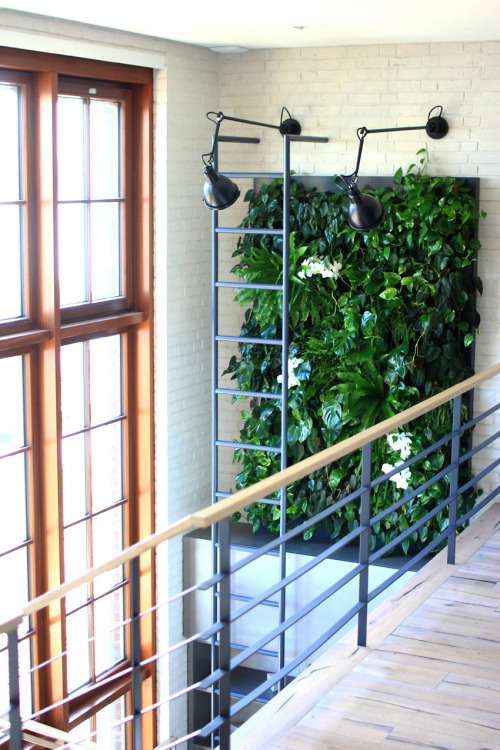


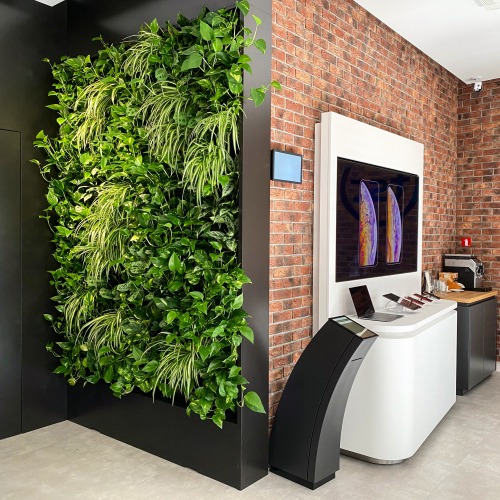
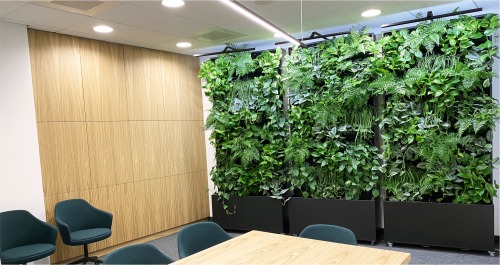
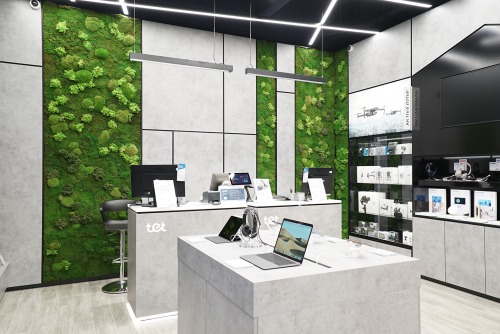
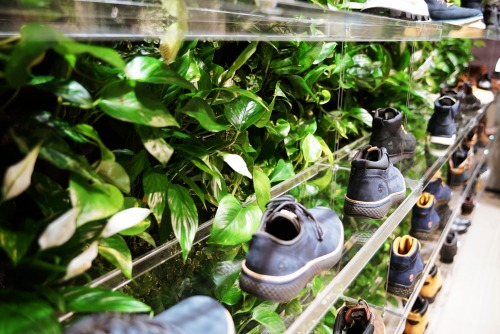
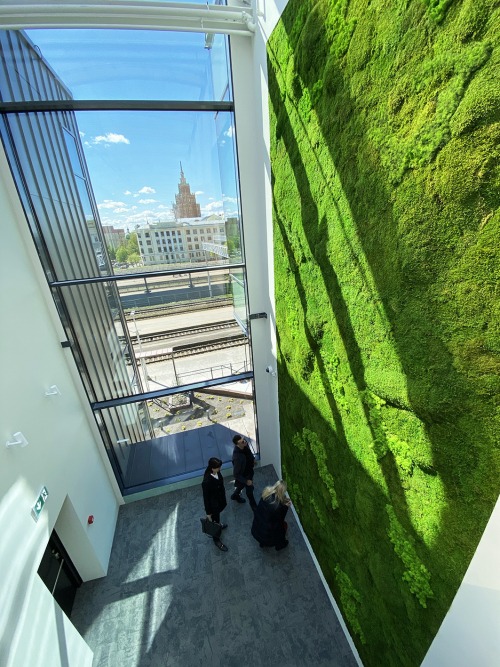

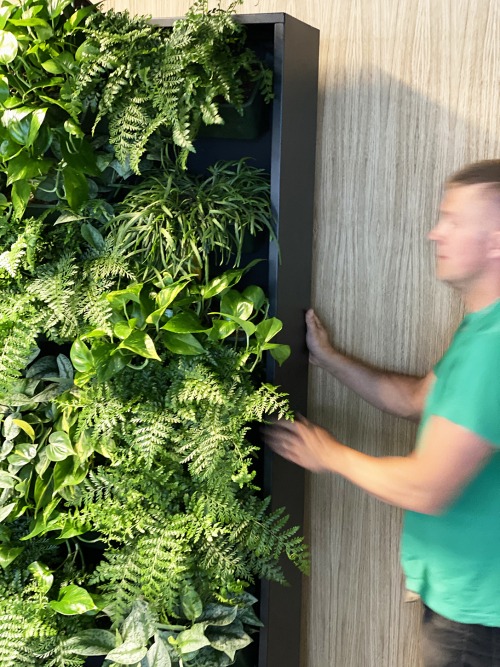
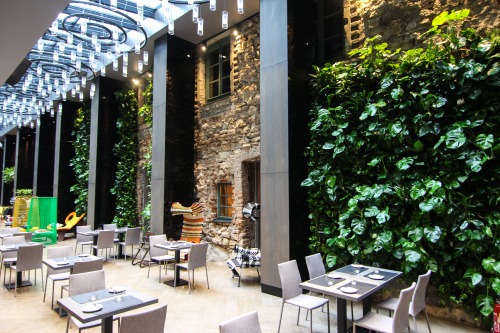
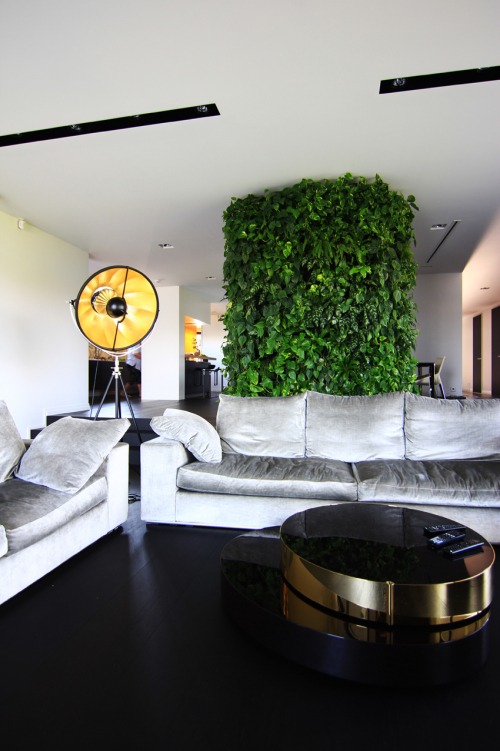



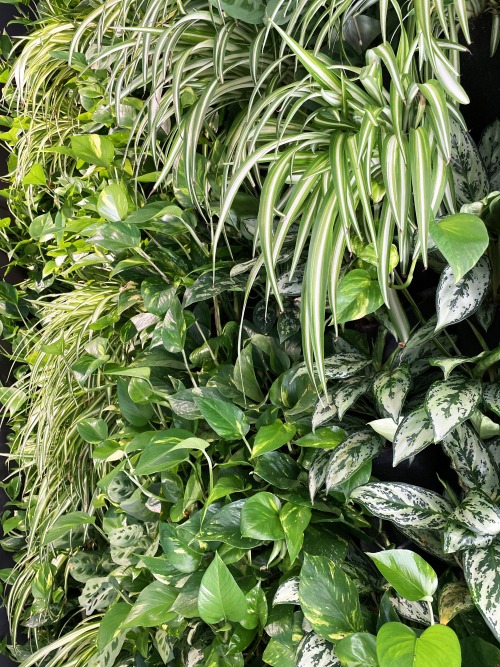

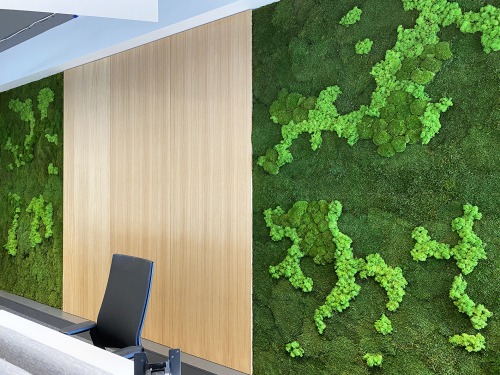
CONTACT US
Vertical garden: an old concept
The concept of a vertical garden, or plant wall, was implemented for the first time in 1938, when a professor at the University of Illinois installed one in his home after years of experiments with technologies and plant varieties. His patented idea is still used as the basis for today’s vertical gardens.
In the past twenty years, the most well-known name in vertical gardens is French designer Patrick Blanc, who started today’s cult of the vertical garden. He has created countless projects worldwide, making living plant systems one of the main elements of biophilic design and interiors. Its popularity can be explained both as the development of a new design trend and by eco thinking and the desire to improve air quality in our overpopulated cities.
The positive impact of a vertical garden on a corporate environment
The development of this technology can be attributed in great part to businesses who have recognised the value of the concept in the eyes of clients and employees, and have already introduced this into the corporate environment. Although there are many more factors, the main benefits of a vertical garden are considered to be the following:
- It showcases the environmentally-friendly, ecologically responsible values of a company, which is just as important for both local businesses and large international corporations who care about sustainability.
- Vertical gardens reduce noise levels. Noise is absorbed best by stabilised wall systems which, thanks to their porous structure, do not conduct sound and are very successful noise insulators.
- Thanks to the presence of so many plants, moisture levels are improved indoors. This is particularly important during cold season when heating is on, or in spaces which receive no natural ventilation.
- Vertical gardens reduce indoor air pollution from furniture varnishes, cleaning products and synthetic decorating products by absorbing them into the plants’ leaves or root systems.
- Rooms with greenery improve employee productivity, increasing work skills and heightening concentration and general satisfaction with the work environment.
- The presence of plants helps reduce stress at work and reduces the risk of illness.
- A high-quality interior which includes a contemporary approach to adding greenery increases the value of the property.
What plants are suitable for a vertical garden?
Each space has a specific environment which impacts plant choice, but the most frequent choices for these living walls are spathiphyllum, dracaena, scindapsus and monstera plants. When installing a system, it is important to install special lighting, not only to help the plants thrive and grow, but also to highlight the garden’s aesthetic.
Vertical gardens are suitable for businesses and premises in a variety of industries, and the benefits have led an increasing number of companies to install them. Regardless of what type you choose—free-standing living walls, moss walls or decorative artificial plant walls—Hercs Flora’s experienced team will help you achieve your desired result. Contact us to find out your options!
Zaļās sienas pozitīvā ietekme uz korporatīvo vidi
Lieli nopelni tehnoloģijas attīstībā veltāmi uzņēmumiem, kas saskatījuši idejas vērtību klientu un darbinieku acīs, un to jau ir ieviesuši korporatīvajā vidē. Lai arī to ir krietni vairāk, par galvenajiem augu sistēmas ieguvumiem var uzskatīt zemāk minētos faktorus.
- Tā norāda uz videi draudzīga, ekoloģiski atbildīga uzņēmuma vērtībām, kas ir vienlīdz svarīgi kā vietēja mēroga uzņēmumiem, tā lielām, starptautiskām korporācijām, kas rūpējas par ilgtspēju.
- Augu sistēmas samazina trokšņu līmeni. Vislabāk skaņu absorbē stabilizēto sienu sistēmas, kas, pateicoties savai porainajai struktūrai, nevada skaņu un ir ļoti sekmīgs skaņas izolators.
- Pateicoties plašajai augu klātbūtnei, tiek uzlabots telpas mitruma līmenis. Īpaši būtiski tas ir apkures sezonā vai telpās, kas netiek dabiski vēdinātas.
- Zaļā siena mazina telpās sastopamo piesārņojumu, kas rodas no mēbeļu lakām, sadzīves ķīmijas un sintētiskiem apdares materiāliem, absorbējot to augu lapās vai sakņu sistēmās.
- Apzaļumotas telpas uzlabo darbinieku produktivitāti, sekmējot darba spējas, paaugstinot koncentrēšanos un vispārējo apmierinātību ar vidi.
- Augu klātbūtne palīdz novērst stresu darbavietā, kā arī samazina slimošanas risku.
- Augstvērtīgs interjers, kurā iekļauta mūsdienīga telpu apzaļumošanas pieeja, paaugstina nekustamā īpašuma vērtību.
Kādi augi piemēroti stādīšanai zaļajā sienā?
Katrai telpai piemīt specifiska vide, kas ietekmē augu izvēli, tomēr visbiežāk šādiem dzīvo augu sienām izmanto spatifīlu, dracēnu, scindapsi un monsteru. Telpās izvietojot šādu sistēmu, svarīgi ir uzstādīt arī speciālu apgasmojumu – tas ir ne vien vitāli nepieciešams augu dzīvotspējai un attīstībai, bet arī izcels sienas estētisko pusi.
Zaļā siena ir piemērota dažādu nozaru uzņēmumiem un telpām, un tās radītie ieguvumi arvien biežāk mudina lemt par tās ieviešanu. Neatkarīgi no tā, kuru no veidiem izvēlēsieties – brīvstāvošu telpaugu sienu, sūnu sienu vai dekoratīvu mākslīgo augu sienu, Hercs Flora pieredzējusī komanda palīdzēs nonākt pie gaidītā rezultāta. Sazinieties ar mums, lai uzzinātu vairāk par iespējām!